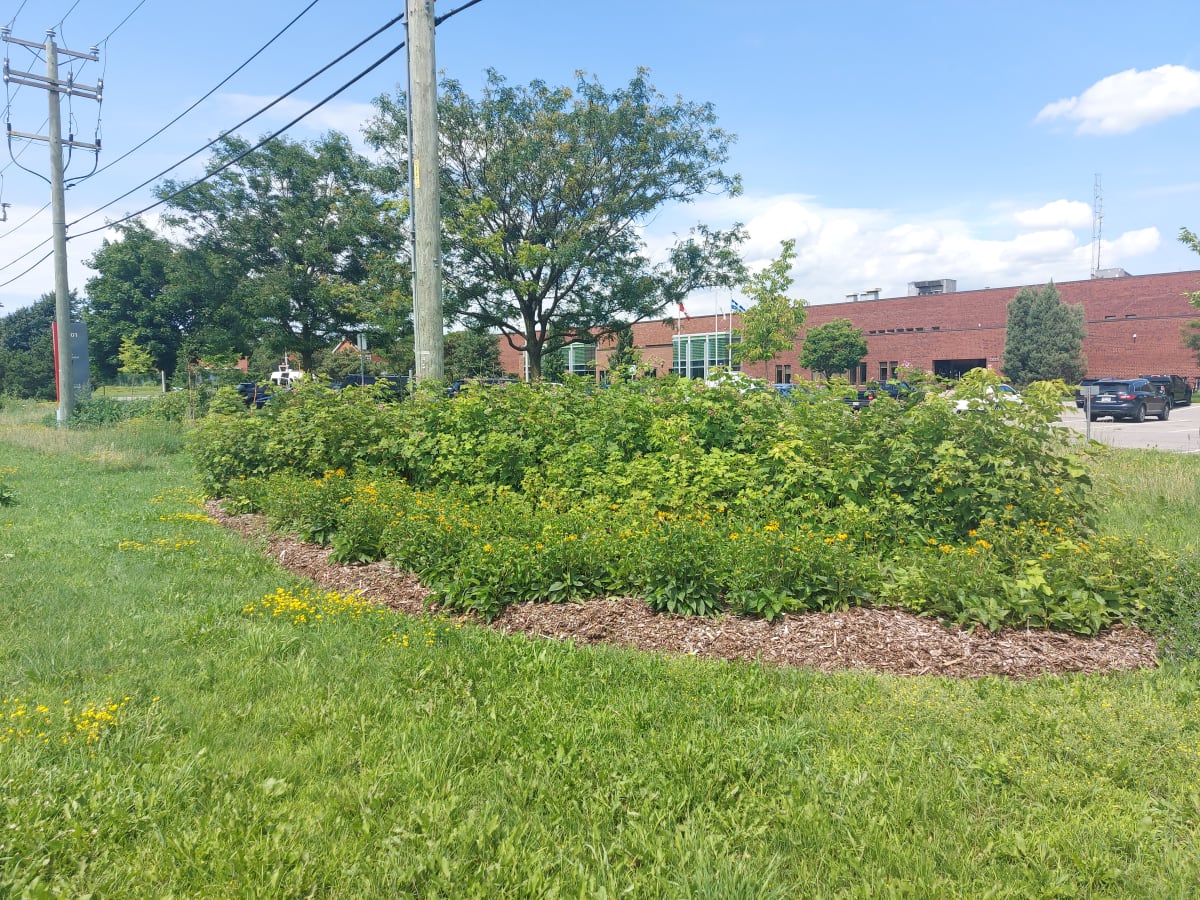Saint-Laurent Biodiversity Corridor
Saint-Laurent Biodiversity Corridor is a 20-year commitment and a unique and highly ambitious project. It will cover an area of approximately 450 hectares.
Its innovative vision was developed in 2018 by Biodiversité Conseil, civiliti, LAND Italia and Table Architecture—the firms that had teamed up and were selected as the winners in a national multidisciplinary landscape architecture competition. Together with Arrondissement de Saint-Laurent’s Division de l’environnement et de la protection du territoire, this team designed a corridor development master plan that was presented on May 22, 2019, in front of the Ateliers municipaux building—the location of the first phase of Saint-Laurent’s corridor.
The corridor will cover an area of approximately 450 hectares, passing through industrial, commercial and residential sectors. It will link the existing biodiversity hubs in Saint-Laurent, such as Boisé du parc Marcel-Laurin, Boisé Cavendish - Raymond-Lasnier - Beaulac - Poirier, the Bois-de-Liesse and Bois-de-Saraguay nature parks and Ruisseau Brook. The corridor will make it possible to restore their connectivity by means of developments that facilitate the movement of plant and animal life as well as people, of course.
This 180-page master plan combines landscape architecture, urban architecture, environment, biodiversity, ecology, culture, art and social development. Its originality and high quality have already earned it two prestigious awards: in February 2020, the National Urban Design Award—presented jointly by the Royal Architectural Institute of Canada, the Canadian Institute of Planners and the Canadian Society of Landscape Architects—and in May 2021, the Award of Excellence from the Canadian Society of Landscape Architects (CSLA) in the Planning and Analysis category. It has also already attracted the attention of international specialists: it was presented in China in November 2019 at the 5th edition of the Wuhan Design Biennale.
This corridor will form a true green, blue and social infrastructure that will provide access to Saint-Laurent residents to enjoy and spend time with nature, in an initially very paved urban environment.
Goals
- Connect the Parc Marcel-Laurin wooded area, the Cavendish — Raymond-Lasnier — Beaulac — Poirier wooded area, the Bois-de-Liesse and Bois-de-Saraguay nature parks and the Ruisseau Brook.
- Restore connectivity by encouraging the movement of flora, fauna and people.
Advantages
- Reconnect people with nature and better adapt to climate change.
- Enable people to travel, enjoy themselves and learn while cohabiting with nature, in an urban context.
- Protect existing green spaces and add vegetated environments to create islands of coolness and enrich biodiversity on Saint-Laurent territory.
Awards
- 2019: presentation of the project at the 5th Wuhan Design Biennale in China
- 2020: National Urban Design Award in the “sustainable development” category, presented by the Royal Architectural Institute of Canada, the Canadian Institute of Planners and the Canadian Society of Landscape Architects.
- 2021: Award of Excellence in the Planning and Analysis category from the Canadian Society of Landscape Architects (CSLA).
Phase 1 - Installations for biodiversity at the intersection of Cavendish and Thimens boulevards
Work completed
Western side
- Tree planting: American red oak, Canadian serviceberry, Cornus stolonifera
- Differentiated management with flowering plant species to attract pollinators
- Strategy to control the invasive common reed with a native willow hedge
- Installations for birds: nesting boxes and perches
Eastern side
- Seasonally adapted native species for pollinators and birds
- Regularly controlled related areas left to fallow
Creation of a green infrastructure by the revegetation of open zones within Parc Philippe-Laheurte, as well as of the right-of-way and the median along Boulevard Cavendish to provide an ecological link to pollinators between the Parc Marcel-Laurin wooded area, the Cavendish-Raymond-Lasnier wooded area and Parc Philippe-Laheurte.
Work completed
- Food forest with trees, shrubs and edible plants providing natural resources for local wildlife. This development is part of the “Zones nourricières écologiques” project of Montréal’s participatory budget involving four other borough and for which funding was announced in 2022.
- An educational trail allowing visitors to discover the interactions between flora and fauna, and to learn more about efforts to preserve biodiversity in urban environments.
- Information markers along the route detailing the various plant species and their ecological role and presenting the information interactively with images and illustrations to be accessible to young and old alike.
Quick search
Need help?
Contact us if you have questions.
Are you sure you want to leave this page?
This page is not available in English. You will be redirected to the English home page.







